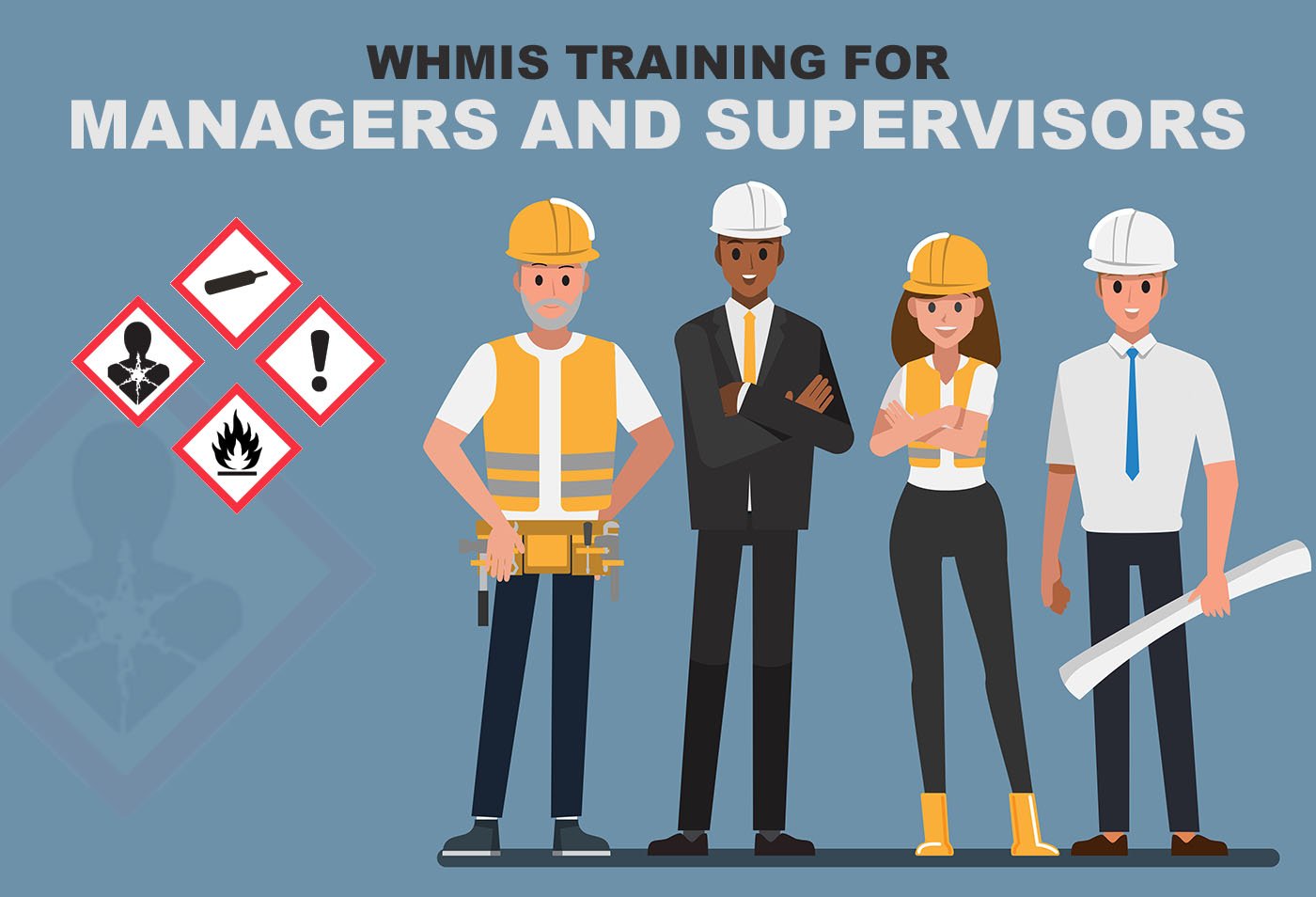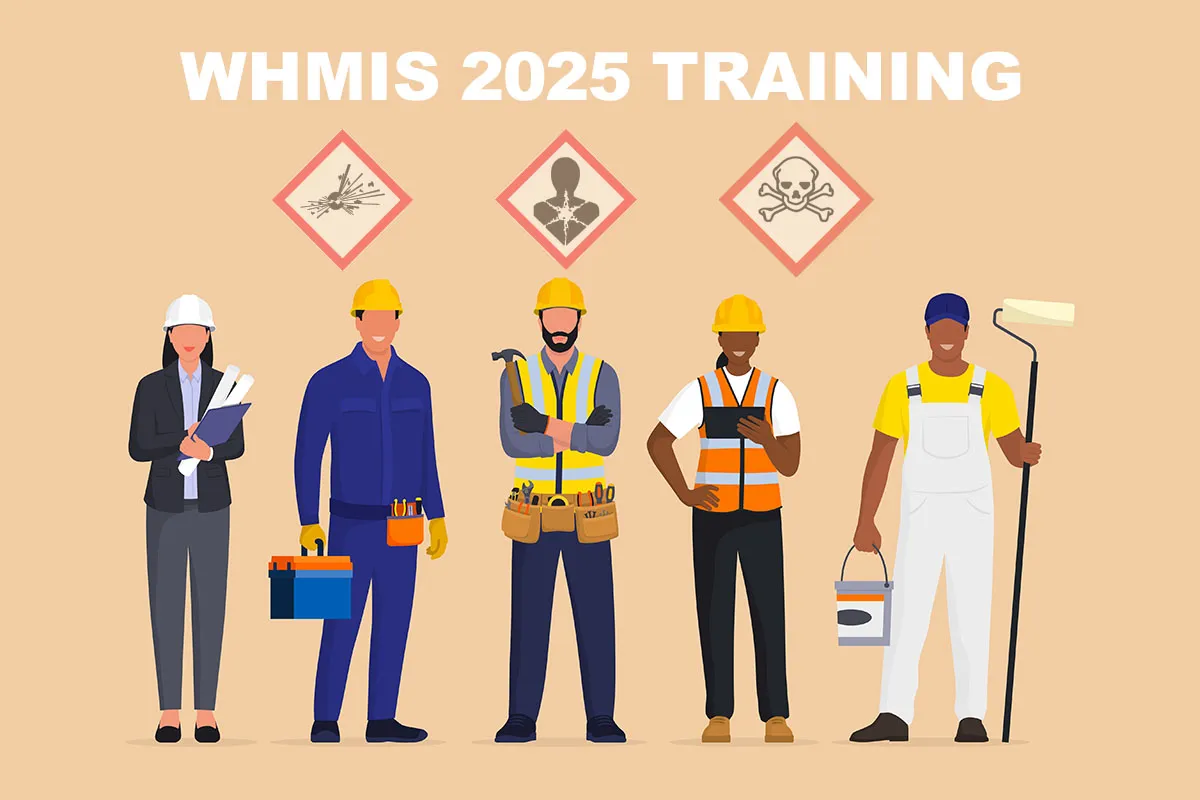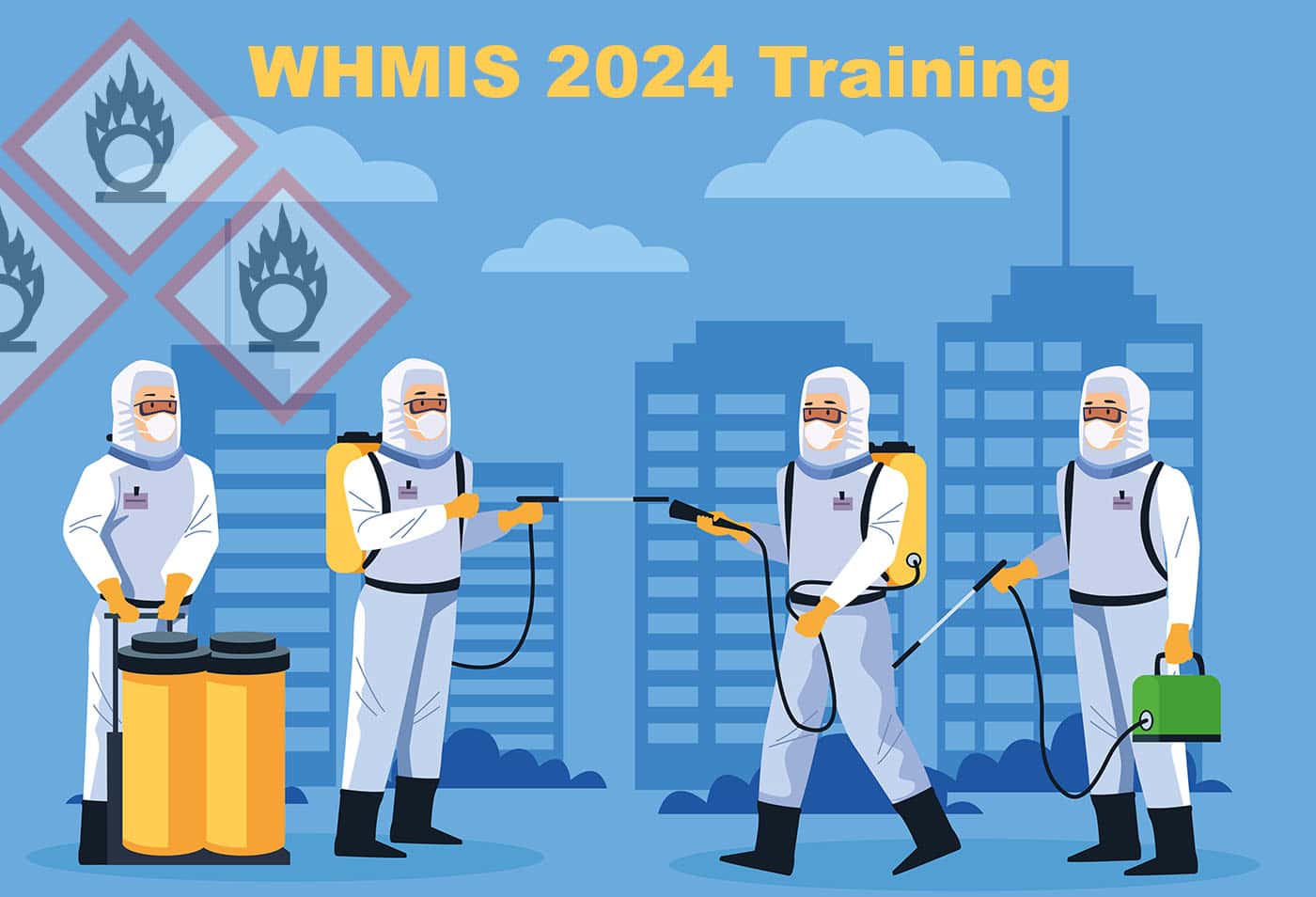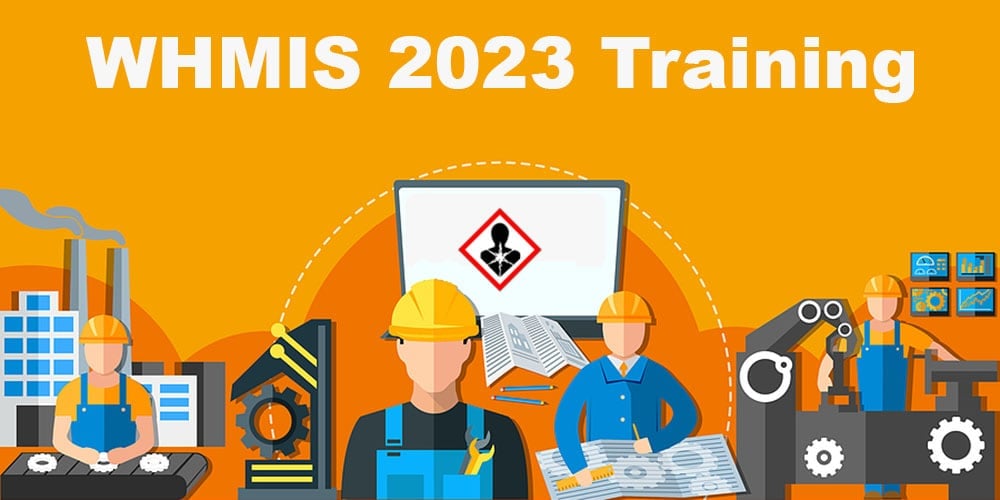Do Supervisors Need WHMIS Training?
We know that most workers in Canada will likely need WHMIS training at some point in their careers. But do Supervisors need WHMIS training as well?
You might think, no, especially if supervisors aren’t themselves directly handling hazardous products.
But failing to provide WHMIS training to your managers and supervisors could be huge mistake, that not only puts them in danger, but also undermines your entire health and safety program.
Let’s learn why.
What is WHMIS?
WHMIS is a comprehensive system designed to provide information on hazardous products used, or present, in Canadian workplaces.
WHMIS includes three key components: labels, safety data sheets (SDS), and worker education programs.
These elements work together to ensure that everyone understands the risks and safety measures associated with hazardous products.
For example, labels provide an immediate visual warnings, Safety Data Sheets offer detailed information, and education programs help ensure that workers know how to handle materials safely.
WHMIS Duties and Responsibilities for Managers and Supervisors
Supervisors play a key role in the day-to-day management of WHMIS in the workplace.
They’re responsible for ensuring that the workers under their supervision understand and follow the safety procedures related to hazardous products.
This includes making sure that workers are trained and informed about the hazards associated with the materials they are working with and ensuring that proper safety practices are followed.
Supervisors should also monitor workplace conditions regularly to ensure compliance with WHMIS regulations and take immediate action to correct any unsafe conditions.
They act as a bridge between the employer’s safety policies and the workers, providing guidance, support, and supervision to maintain a safe working environment.
Why Supervisors Need WHMIS Training
So, why is it essential that managers and supervisors also receive WHMIS training?
To put it simply, without adequate training, supervisors cannot effectively promote or enforce WHMIS guidelines, because they themselves, don’t know those guidelines.
For example, let’s say that during a training session, a worker learns that they need to wear a specific type of glove when handling a certain hazardous product.
Now, a supervisor is on the shop floor with the worker is handling the product. The worker for some reason, is not using the proper gloves.
The supervisor sees that they are using gloves, but is not aware that they’re incorrect. They say and do nothing about it, which communicates to the worker that it’s generally accepted to use the incorrect PPE without consequence
Not only does this put the worker at danger when using this particular product, but it communicates that it’s not important to follow specific safety measures in general.
What’s potential worse is that, this idea with permeate into other parts of the safety program and can be the downdall of your safety culture.
To effectively promote and enforce safety requirements, supervisors must themselves be aware of those requirements and what the expectations are for their workers.
What Does the Law Say?
In addition to the above, the law also indicates that supervisors need training. Specifically, all occupational health and safety legislation states that supervisors must be “competent”.
This means that supervisors must have the knowledge, training, and information required to adequately promote and enforce workplace health and safety guidelines.
If companies do not provide their supervisors with this required information, they’re in contravention of occupational health and safety laws.
Do Supervisors Need the Same WHMIS Training as Workers?
Now that we understand that managers and supervisors need WHMIS training, the next question is, what kind of WHMIS training do they need?
This depends since each workplace is unique and circumstances can vary significantly.
Worker Training
At minimum, supervisor should at least complete the same WHMIS training that their workers complete. This can help ensure that they are aligned on the guidelines that workers are expected to adhere to.
Supervisor-Specific WHMIS Training
There are also training programs that are a available that are specifically designed for managers and supervisors.
For example, our WHMIS for Managers and Supervisors online course not only covers WHMIS fundamentals, but also helps prepare managers and supervisors to implement, promote, and enforce WHMIS programs in their workplace.
As mentioned, each workplace is unique, so it’s best to perform a detailed evaluation to determine the best approach for training your leadership team. You should also include your Joint Health and Safety Committee or representative in the evaluation process.
Benefits of WHMIS Training for Supervisors
As you can see, there are many benefits to training managers and supervisor in WHMIS.
Some of these include:
Keeping Workers Safe: WHMIS training equips supervisors with the knowledge to identify and mitigate hazards, ensuring that workers are protected and safe practices are consistently followed.
Complying with OHS Legislation: By understanding and enforcing Occupational Health and Safety laws, supervisors can ensure that the workplace complies with all legal standards, avoiding potential fines and legal issues.
Maintaining a Positive Safety Culture: WHMIS training encourages supervisors to lead by example, fostering a culture where safety is prioritized and valued by everyone in the organization.
Reducing Costs Associated with Incidents: By preventing incidents and minimizing risks, WHMIS training for supervisors helps reduce the financial impact of workplace incidents.
Proving WHMIS training for managers and supervisors is a strategic move that benefits both employees and the organization.
Training Options
When it comes to WHMIS training, the law requires employers to ensure employees receive it, but doesn’t require it to be completed via any specific method.
This flexibility allows employers to tailor training programs to fit their unique workplace needs and circumstances.
Custom In-House Training
Employers have the option to develop custom training programs and deploy them internally. This approach allows for a personalized training experience that directly addresses the specific hazards and safety protocols relevant to their operations.
By creating a custom program, employers can ensure that the training is directly aligned with their safety culture and operational requirements.
Online Training
Alternatively, there are convenient options like online training courses, such as our WHMIS for Managers and Supervisors course.
Online WHMIS certification training offers flexibility and accessibility, allowing supervisors to complete the training at their own pace and from any location. This can be especially beneficial for organizations with multiple sites or remote teams.
Ultimately, the choice of training method should be based on a thorough evaluation of the workplace’s specific needs and resources.
As mentioned earlier, employers should involve their Joint Health and Safety Committee or representative in this evaluation process to ensure the chosen training method effectively meets the organization’s safety objectives.
Conclusion
In conclusion, WHMIS training is essential for supervisors and managers. They are responsible for promoting and enforcing WHMIS guidelines, and without training, they cannot effectively fulfill this role.
By investing in WHMIS training, organizations can create a safer workplace, reduce risks, and ensure compliance with legal standards.
Supervisors equipped with WHMIS knowledge are better prepared to lead their teams, manage emergencies, and foster a culture of safety.
Prioritizing WHMIS training is not just a regulatory requirement; it’s a commitment to the well-being of each and every employee.






